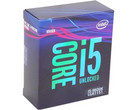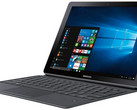As the latest Made By Google event has shown, the company is serious about bringing its software algorithm and AI prowess directly to customers through Google-branded hardware. In addition to the new Pixel 3 phones, there was the new Google Home Hub and Chromecast devices as well as the first tablet from Google running its Chrome OS.
Although the Pixel Slate had leaked in both name and images before the event, nothing was pointing one way or the other about whether it would ship with an ARM-based chip like the Qualcomm Snapdragon 845 found in the new Pixel 3 phones, or Intel silicon. Now that the launch event has come and gone, we now know that there will be four variants of the Pixel Slate sold. The entry-level model (US599) is fitted with an Intel Celeron chip. The next three models all feature 8th gen mobile silicon and include options for a Core m3 (US$799), a Core i5 (US$999) and the top model is fitted with a Core i7 (US$1,599).
The latter two are effectively the equivalent of the formerly branded "Core m5" and "Core m7" silicon, so they aren’t exactly powerhouses; but they do offer a good balance between performance, battery life and thermal design properties. Importantly, all of the chips are capable of running Windows 10 natively. The m3 and i5 models come with 8GB of RAM while the i7 model comes with a whopping 16GB of RAM. Overkill, indeed, for Chrome OS, but perfect for running Windows 10.
If you’ve been following the development of Chrome OS over the past 12 - 18 months in particular, Google has made a concerted effort to address its shortcomings by adding features like support for Android apps and split-screen support for multi-tasking. Also found in developer threads in June was a reference to WHCK (Windows Hardware Certification Kit). Rumored to be called “Campfire” (a likely reference to Apple’s Bootcamp), the project is aiming to bring official Microsoft certification to certain Chrome OS devices, which means, at the very least, the ability to dual-boot into Windows 10 as needed.
The inclusion of Intel chips in the new Pixel Slate means that when, and if, Google is ready to move forward with Campfire, the Pixel Slate (along with its Intel-powered Pixelbook) could be ready to pose a serious headache to both Microsoft and Apple. It was originally thought that Google would debut the already spotted Pixelbook 2 alongside the rest of the new hardware it has just launched. It could have decided to wait until the dual-boot feature is ready (so as not to detract from its first Chrome OS-based tablet). Regardless, it remains an exciting prospect.
Source(s)
Own


















